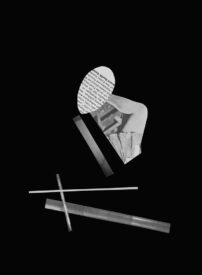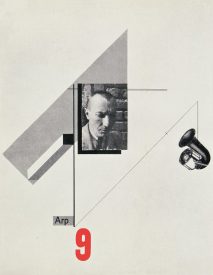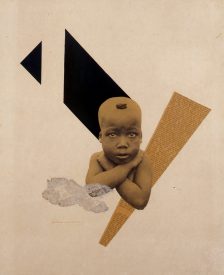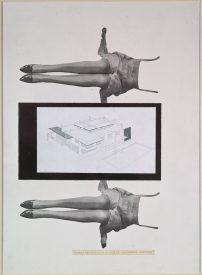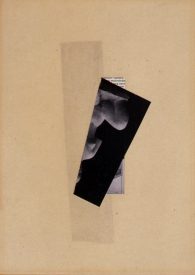The Photoworks
The Photoworks of Friedrich Vordemberge-Gildewart are listed under P 1 to P 17, giving shape to the new section within the digital OEuvre-Catalogue of the artist’s paintings and works on paper.
In the years between 1926 and 1937 VG created these few works out of his great interest in photography and its possibilities as an artistic experiment. By examining the effect of rich black and white contrasts between geometrical elements and forms or fragments out of the visible reality, experience grew for his creative work in general. So he agreed with Max Burchartz in the opinion of an ingenious addition between elementary painting, designing and photography.
From the 1920s VG was an active part of the Avant-garde of Geometric Abstraction, was a friend of national and international photographers just like Lucia Moholy and László Moholy-Nagy. Out of his working relationship with Albert Renger-Patzsch, which was full of high regard and humor, he optained marvelous inspiration for his own ideas.
He worked with Ernst Kallai and Franz Roh, was part of great exhibitions of his time – together with important artists of the photo-scene he exhibited at ‘Film & Foto’, Stuttgart 1929, and ‘Fotomontage’, Berlin 1931.
In his Photoworks VG followed the technique of Collage, refering to the principle of combining heterogenous materials just as cuttings of newspapers, fragments of writing, photographs or paper. He created new works with a high sensibility, with a playful and experimental use of materials, with processes and ideas based on photographs – giving a special meaning to the technique of Collage in general within his own OEuvre.
VG’s way of working was a process of huge discipline, when he placed only a few fragments of photographs or reproductions on a dark or light ground. Always asking questions about form and structure of material, creating results for his vision of weightlessness and his illusion of space – absolutely close to own solutions in his painting of the following years.
P 1 – P 6
A series of Photo-collages with old numbers given by the artist in 1928.
1, 2 and 3 are lost or destroyed, photographs are not available.
All the others are shown by photo together with their old numbers 4 to 8a.
P 7
Photo-collage, called ‘Equilibre'(1927).
With P1- P6 from a series with objects against a dark background.
In the 1920s and in the years later onwards the term ‘Photo-montagen’ was used for these works, but already in 1990 on the occasion of the book ‘Friedrich Vordemberge-Gildewart. The Complete Works’ this term was changed to ‘Photo-collages’ after new examination of the artist’s technique.
P 8 – P 11
Three Vintage-Prints from Photocollage No.7(1928) and one from ‘Equilibre’ (1927) were found in famous collections and are listed now, too.
Those photographic prints after the unique collages in nearly the same large or smaller format, were to be send to colleagues and shown in exhibitions.
P 12 – P 15
A last series shows works, where VG combined other techniques with photocollage as a part of the composition. He by himself listed these works in his studio-book together with his paintings. Numbered as K 38, K 47, K 48 and K 49 they convey the mentioning as important works.
P 16 & P 17
The lost K 43 and a single untitled lost photogram are listed at the end of the section Photoworks.
Together with Dr Simone Förster, Ann & Jürgen Wilde Collection/Pinakothek der Moderne Munich, the research on VG’s Photocollages will follow. Great thanks to her for special help, ideas and inspiring collaboration.






